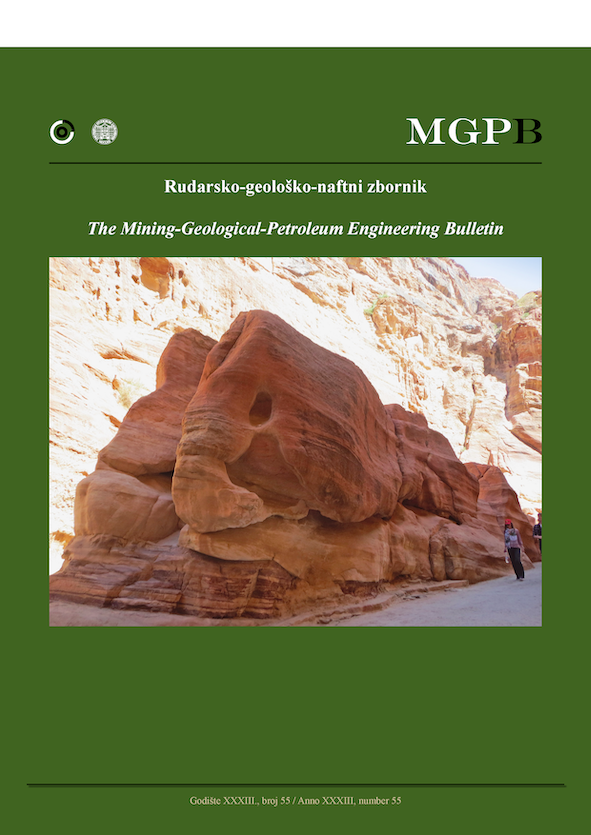Performance prediction of hydraulic breakers in excavation of a rock mass
DOI:
https://doi.org/10.17794/rgn.2021.4.9Keywords:
Hydraulic breakers, rock breaking, breaking rate, rock mass propertiesAbstract
The demand for the usage of hydraulic rock breakers in excavating rock masses has increased recently for environmental and economic reasons. The conventional method (i.e., drill and blasting technique) has many restrictions due to environmental aspects. In this paper, we propose a methodology for the prediction of the performance of hydraulic rock breakers in the excavation of a rock mass. The case study area is located in Northwest Egypt on the shoreline of the Mediterranean Sea. Extensive site investigation was implemented using exploration boreholes showing that the majority of the site is limestone with lenses of sands. Based on the collected rock properties, mapping of both the rock quality (RQD) and the uniaxial compressive strength (UCS) for the rock mass was conducted. Such mapping of the mechanical properties helps in the zoning of a rock mass and grouping the similar rock zones of nearly matched properties. Due to economic and machinery availability concerns, this study focuses on very small, small, and medium capacity hydraulic breakers. For each type of rock breaker, calculations of the net breaking rate (NBR) are implemented for each group of the rock with similar properties. The challenge of this methodology is that the excavation of the rock mass shall be implemented in a very limited time frame (only one year ≈ 300 workdays). Therefore, two scenarios of light-duty and medium rock breakers are applied providing the number of machines required with specifications and working days. The first scenario is assigned to medium duty machines, while the second scenario concerns very small to small rock breakers. In general, such a sequence could be adopted for other cases with different rock mass properties, hydraulic breakers specifications and any desired time frame.
Downloads
Published
How to Cite
Issue
Section
License
Copyright (c) 2021 authors and journal

This work is licensed under a Creative Commons Attribution 4.0 International License.
Creative Commons-BY
Authors who publish with this journal agree to the following terms:
In agreeing this form, you certify that:
- You read the ethical codex of the RGN zbornik available at journal web.
- You submitted work is your original work, and has not previously been published and does not include any form of plagiarism.
- You own copyright in the submitted work, and are therefore permitted to assign the licence to publish to RGN zbornik.
- Your submitted work contains no violation of any existing copyright or other third party right or any material of an obscene, libellous or otherwise unlawful nature.
- You have obtained permission for and acknowledged the source of any illustrations, diagrams or other material included in the work of which you are not the copyright owner.
- You have taken due care to ensure the accuracy of the work, and that, to the best of your knowledge, there are no false statements made within it.
- All co-authors of this submitted work are aware of, and in agreement with, the terms of this licence and that the submitted manuscript has been approved by these authors.
Publication licence
You retain copyright in your submitted work, according to journal license policy (CC-BY). By signing this form you agree that RGN zbornik may publish it under the publication licence. In summary the licence allows the following:
Anyone is free:
- To copy, distribute, display, and perform the work.
- To make derivative works.
Under the following conditions:
- The original author must always be given credit.
- The work may not be used for commercial purposes.
- If the work is altered, transformed, or built upon, the resulting work may only be distributed under a licence identical to this one.
Exceptions to the licence
In addition to publishing the work printed under the above licence, RGN zbornik will also enable the work to be visible online.
The journal editorial can change the licence rules anytime but it cannot retroactively restrict author(s) rights.


